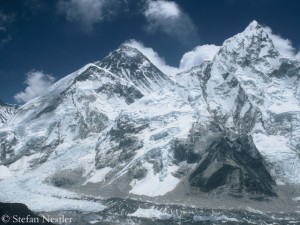The litany of the (Everest) ladder
A ladder at the Hillary Step? This story just won’t die. Last spring, a member of the Nepalese government had given a tip to some journalists that there were considerations in Kathmandu about this subject. After this year’s General Assembly of the International Climbing and Mountaineering Federation (UIAA) at Flaggstaff in the USA a few days ago, the issue was item 1 of the final news release. “As one of the most iconic landmarks of the world, Mount Everest belongs to all of mankind”, the UIAA statement reads. “Thus, the ascent of this magnificent mountain should be reserved to those who acquired the skills and the experience needed to reach the highest point of the world.”
And the ladder on the north side?
The UIAA does not support “the addition of permanent structures to the ascent routes, as this would lessen the value of the achievement, spoil the adventure and encourage the abuse of this sacred place we call Mount Everest.” Does it also apply for permanent material deposits which the operators of commercial expedition would like to install above the dangerous Khumbu Icefall, so that the Sherpas would not have to carry up and down equipment which is used year after year? And what’s about the ladder at the Second Step, which alleviate the key point on the Northeast Ridge since 1975? Does the UIAA want the Chinese to remove the ladder or is it taken for grown together with the mountain after almost 40 years?
Two ways at key points
There is not much to suggest that Nepal’s government really needs a decision support on Hillary Step just now. In spring 2013, for the first time Sherpas fixed two ropes at the bottlenecks of the route so that traffic jams could be avoided. Even on the Hillary Step – without a ladder. Taking the UIAA statement literally, the entire commercial climbing on Mount Everest would have to be debated. How many of the hundreds of summit candidates really have the necessary “skills and the experience” for climbing Everest as demanded by the UIAA? That issue could be disputed splendidly.








